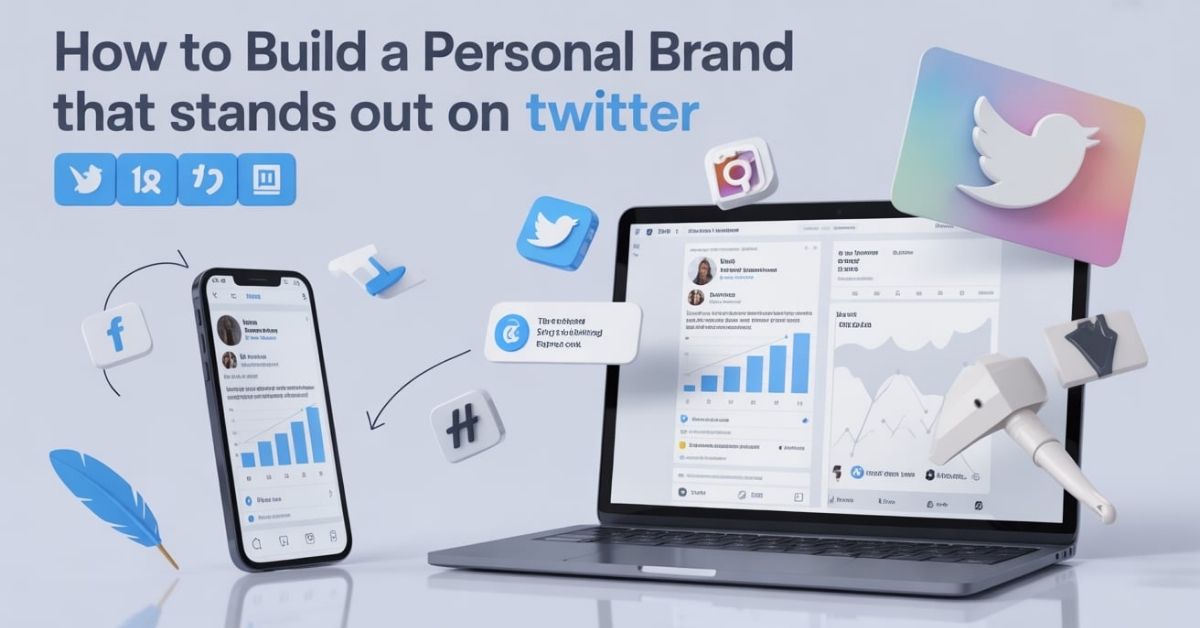Gaming used to be “just for fun.” Now it’s an income stream. Not just for pro esports teams or Twitch superstars – for normal people with a phone, a Twitter account, and some consistency.
The big shift is this: playing games can make you money, and talking about those games on Twitter can make you a brand.
Twitter is where “I play a game on my couch” turns into “I run a micro-business.” It’s where players become creators, creators become communities, and communities become markets.
Let’s break down how that actually works.
Gaming Is No Longer Just Gaming – It’s Content
In 2019, saying “I make money playing mobile games” sounded like a scam. In 2025, it sounds like a strategy.
Millions of people now earn side income from games. Some earn beer money. Some pay rent. That part is already normal. The new part is: they’re not just playing. They’re documenting it.
That documentation lives on Twitter:
- “Just hit level 50 in this puzzle game and got $5.”
- “Earned $42 this weekend playing tournaments while watching Netflix.”
- “3 apps I use daily to get paid for games.”
This is how you start building a brand. You’re not just playing. You’re showing people:
- What you’re doing,
- What you’re earning,
- How they can do it too.
People don’t follow you because you’re the best gamer in the world. They follow you because you’re slightly ahead of them and honest about it.
Game and Earn: The New Micro-Economy
Let’s clear something up: this isn’t about massive esports prize pools. That used to be the only way to “go pro” – win a $250k tournament against killers. That was 0.01% of players.
Now? The money is spread out.
Gaming companies learned something important: if they share revenue with players, players stay longer.
You’ll see a few main models:
– Task / milestone rewards
Hit level X, complete a challenge, log in daily. Some games literally pay you for progress. “Reach level 50, claim $5.” Simple.
– Skill-based platforms
This is not gambling, it’s competition. You play against people at your level in things like pool, darts, chess, word battles. If you’re better, you win real cash. And because matchmaking is based on skill brackets, beginners aren’t instantly farmed by veterans.
– Mobile apps
This is the monster category. There are dozens of PayPal games that pay real money right now. We’re talking match-three games, trivia, word games, bubble shooters, “who can solve this fastest” type formats. It’s casual, and it pays out.
This entire “game and earn” economy exploded because it fits modern life: low barrier, no boss, no schedule.
Why Twitter Sits in the Middle of All This
Playing the game earns you dollars.
Talking about the game earns you leverage.
On Twitter you can:
- Attract followers who want to learn how you’re doing it.
- Build authority in a niche (“I test new earn-to-play apps so you don’t waste time on trash.”)
- Attract collabs with platforms that will literally pay you to mention them.
- Sell mini-guides, spreadsheets, or private chats/communities.
Twitter is basically your storefront.
Here’s what works on Twitter right now if you want to build that storefront:
A. Proof posts
Screenshot + small story.
“I played 47 minutes today while my kid napped. $14.38. Not life-changing, but that’s groceries.”
People trust numbers and normal life more than hype.
B. Mini-teach posts
Short threads like:
- “3 games that actually paid me this week”
- “Stop grinding at 9am. Here’s when payouts spike”
- “How I avoid getting banned / flagged”
Education = authority. Authority = followers. Followers = income later.
C. Transparency posts
Nobody believes ‘get rich fast.’ They believe, “I made €312 this month, here’s the breakdown and what didn’t work.”
You win long-term by being the person who publishes the real math.
The Stack Behind Game Income (Stuff You Should Talk About)
Most people just see “play game → get money in PayPal.” But there’s real infrastructure behind it, and talking about it on Twitter makes you sound legit, not spammy.
Useful angles to tweet about:
- Security. These platforms run two-factor auth, SSL encryption, machine-learning anti-cheat. They act like fintech now, not toys.
- Payments. Micro-transactions are constant. Payouts happen in small bursts instead of one salary-style paycheck.
- Matchmaking. Skill-based systems try to pair you with similar players so new users don’t instantly quit. That’s what makes it sustainable.
When you explain this side – how it actually works under the hood – you move from “random gamer shouting about money” to “person who understands the ecosystem.” Brands notice that. People who want to learn notice that. That’s how you become the default account to follow.
Strategy > Grinding
This matters both for playing and for branding.
On the playing side:
- Peak windows matter. Weekend bonus events can 2–3× your hourly rate. Tuesday morning usually pays worse.
- Running 4–5 apps is smarter than going all-in on one. If one platform silently nerfs payouts, you don’t die.
- Switching games stops burnout. Burnout kills consistency.
On the Twitter side:
- You don’t need 40 tweets a day. You need 1–2 high-signal tweets people bookmark.
- You want repeatable formats. “Daily Earnings Report,” “App Review of the Day,” “Beginner Mistakes #3.”
- You should build series. Series create anticipation. Anticipation creates returning followers.
Here’s the formula:
Play smart for 2 hours → Document 2 minutes → Publish → Build audience → Audience compounds.
This Is Already Changing Real Lives (And You Can Say That Without Lying)
This is not theory.
- In the Philippines, families literally pool game earnings into household income.
- In Brazil, “play-to-earn” became a first job for some players.
- In the U.S., retired people are using casual games to supplement Social Security.
The money might be small per hour… but not small per month. An extra €200–€500 is very realistic if you treat it like a system, not like a lottery.
And yes, tax is real. Once you cross about $600/year on a single platform, that’s reportable income. So if you’re serious, keep a spreadsheet. (Pro tip: posting that spreadsheet layout on Twitter = instant credibility content.)
Where It’s Going Next (This Is Content Gold)
If you want to sound future-facing on Twitter (and you do), talk about where this is headed:
– VR / AR earning
Imagine being paid for exploring virtual worlds, solving location-based AR challenges in your own city, or capturing in-game assets that have resale value. That’s coming.
– AI-driven personalization
Games are already adapting difficulty to you, rewarding you for what you’re good at, and filtering out cheaters before cashouts. That’s only getting sharper.
– Global onboarding
The CNN reports the industry hitting $321 billion by 2026. But that’s conservative. According to Wikipedia’s gaming industry analysis, emerging markets haven’t even scratched the surface yet. India and Africa represent billions of potential players just getting reliable internet access.
How to Turn All This Into Your Twitter Brand (Step by Step)
Here’s a plug-and-play path if you’re starting from zero:
Step 1: Pick your angle
You’re not “a gamer.” Too broad. You’re:
- “Mobile game side income guy”
- “I test which apps actually pay”
- “I optimize earnings time per hour”
You need one sentence that explains why people should follow you.
Step 2: Start playing 2–3 earn-to-play games
Use a few different models (skill-based, milestone rewards, trivia). Track:
- Time spent
- Money earned
- How fast payouts hit your account
Yes, be sure at least one of them is from the category of PayPal games that pay real money. People recognize PayPal. It signals legitimacy.
Step 3: Post results daily in public
This is not “look at me, I’m rich.” This is:
- “Day 1: Earned €6.20 in 53 minutes. Mostly from word games. Banned from one app because I didn’t verify ID fast enough. Lesson: verify first.”
- Attach a screenshot (hide personal info). That builds trust faster than any sales pitch.
Step 4: Teach while you learn
Every time you figure out something useful (peak hours, payout delays, which game is stingy, which game nerfed rewards), tweet it.
Teaching is what turns you into “the person to follow.” Not flexing.
Step 5: Build a simple resource
After ~30 days, you’ll have enough info to package:
- “Beginner pack”
- “Starter stack: 5 legit apps + peak times + cashout rules”
People will ask for it. Some will pay for it. Some companies will DM you to feature them.
Step 6: Stay clean
No fake screenshots, no “I made 4k in a day” nonsense. You’re not dropshipping dreams. You’re building trust capital. Trust is the business model now.
Why This Matters for Business, Not Just Side Cash
This is where it gets spicy.
If you do this right, you’re no longer “a gamer.” You are:
- a distribution channel,
- a micro-influencer in a fast-growing niche,
- a tester with real data.
Game studios, earning platforms, fintech payout apps – they all need distribution. If you can move even 50 people to try something, you have value. You are now a partner, not just a user.
That’s where Twitter is ridiculously powerful. You don’t need a YouTube studio, you don’t need to stream for 6 hours a day. You just need a feed that people check because you save them time and make them money.
In other words:
Play → Document → Teach → Build trust → Monetize the trust.
That’s the loop.
And that’s how you turn gaming, Twitter, and a phone into an actual brand – not in theory, but in public, in real time, where everyone can see it.

Hi, I’m James Anderson, a tech writer with 5 years of experience in technology content. I’m passionate about sharing insightful stories about groundbreaking innovations, tech trends, and remarkable advancements. Through Techynators.com, I bring you in-depth, well-researched, and engaging articles that keep you both informed and excited about the evolving world of technology. Let’s explore the future of tech together!








